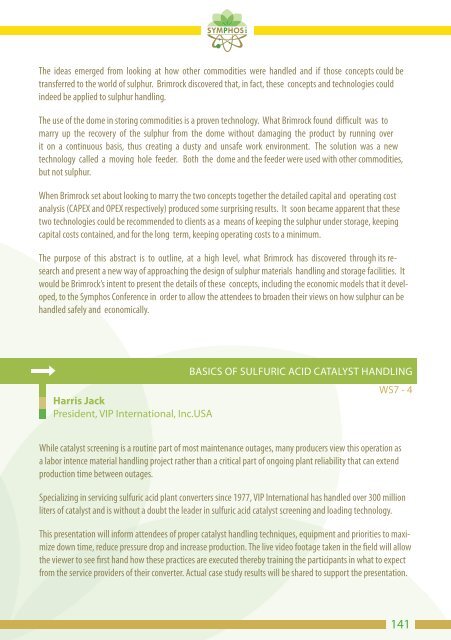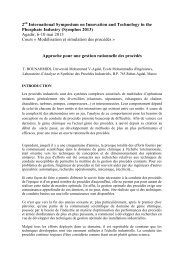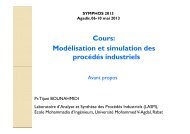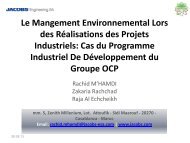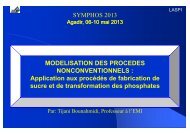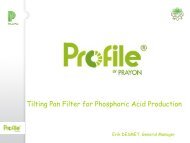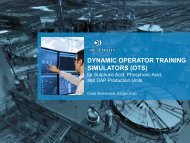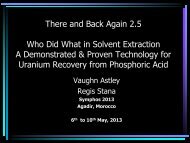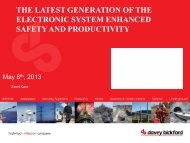Abstract SYMPHOS 2011
Abstract SYMPHOS 2011
Abstract SYMPHOS 2011
You also want an ePaper? Increase the reach of your titles
YUMPU automatically turns print PDFs into web optimized ePapers that Google loves.
The ideas emerged from looking at how other commodities were handled and if those concepts could be<br />
transferred to the world of sulphur. Brimrock discovered that, in fact, these concepts and technologies could<br />
indeed be applied to sulphur handling.<br />
The use of the dome in storing commodities is a proven technology. What Brimrock found difficult was to<br />
marry up the recovery of the sulphur from the dome without damaging the product by running over<br />
it on a continuous basis, thus creating a dusty and unsafe work environment. The solution was a new<br />
technology called a moving hole feeder. Both the dome and the feeder were used with other commodities,<br />
but not sulphur.<br />
When Brimrock set about looking to marry the two concepts together the detailed capital and operating cost<br />
analysis (CAPEX and OPEX respectively) produced some surprising results. It soon became apparent that these<br />
two technologies could be recommended to clients as a means of keeping the sulphur under storage, keeping<br />
capital costs contained, and for the long term, keeping operating costs to a minimum.<br />
The purpose of this abstract is to outline, at a high level, what Brimrock has discovered through its research<br />
and present a new way of approaching the design of sulphur materials handling and storage facilities. It<br />
would be Brimrock’s intent to present the details of these concepts, including the economic models that it developed,<br />
to the Symphos Conference in order to allow the attendees to broaden their views on how sulphur can be<br />
handled safely and economically.<br />
Harris Jack<br />
President, VIP International, Inc.USA<br />
BASICS OF SULFURIC ACID CATALYST HANDLING<br />
WS7 - 4<br />
While catalyst screening is a routine part of most maintenance outages, many producers view this operation as<br />
a labor intence material handling project rather than a critical part of ongoing plant reliability that can extend<br />
production time between outages.<br />
Specializing in servicing sulfuric acid plant converters since 1977, VIP International has handled over 300 million<br />
liters of catalyst and is without a doubt the leader in sulfuric acid catalyst screening and loading technology.<br />
This presentation will inform attendees of proper catalyst handling techniques, equipment and priorities to maximize<br />
down time, reduce pressure drop and increase production. The live video footage taken in the field will allow<br />
the viewer to see first hand how these practices are executed thereby training the participants in what to expect<br />
from the service providers of their converter. Actual case study results will be shared to support the presentation.<br />
141


